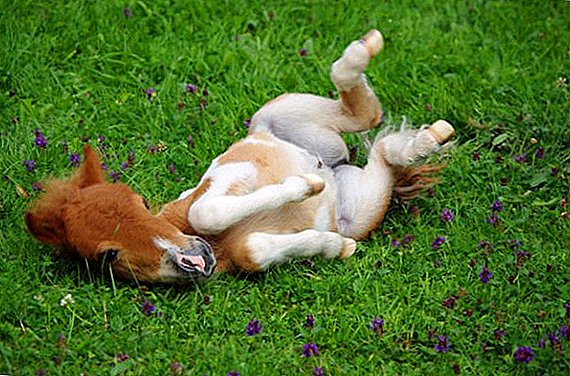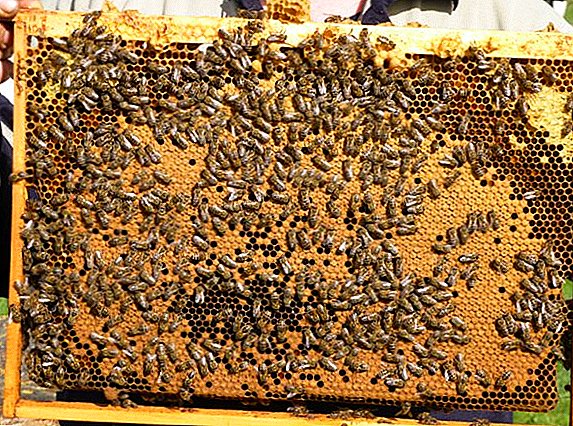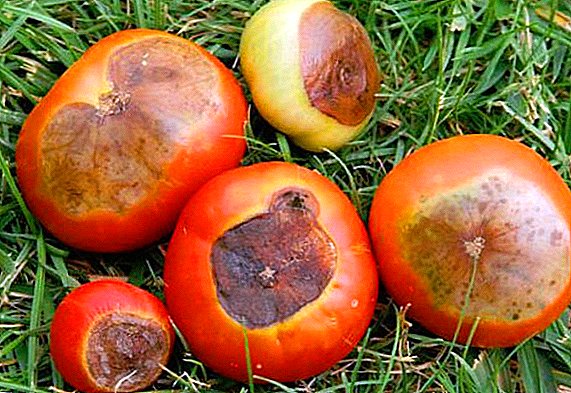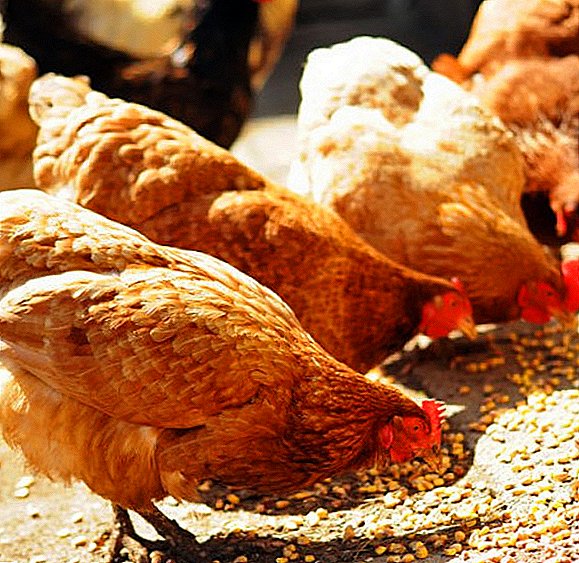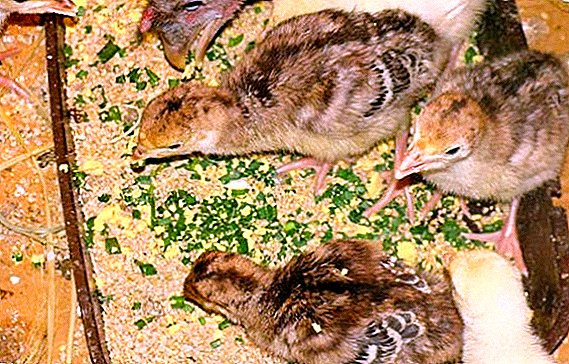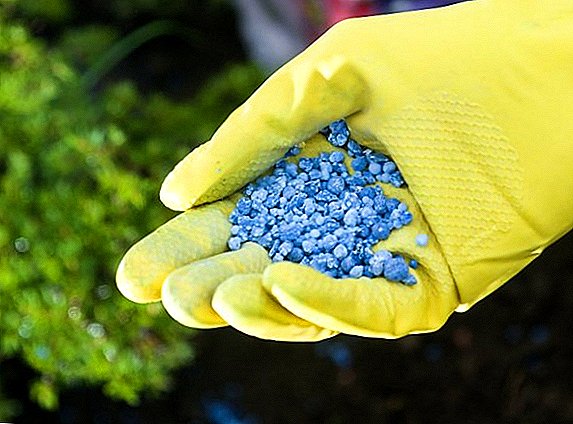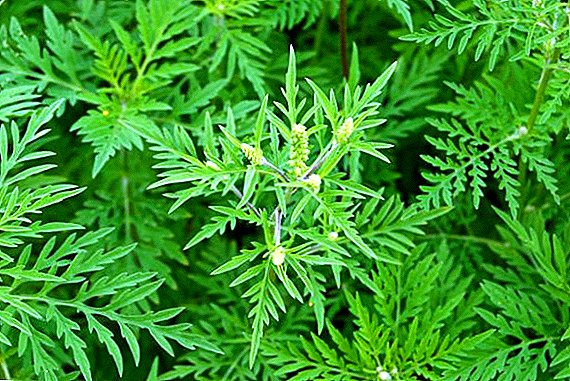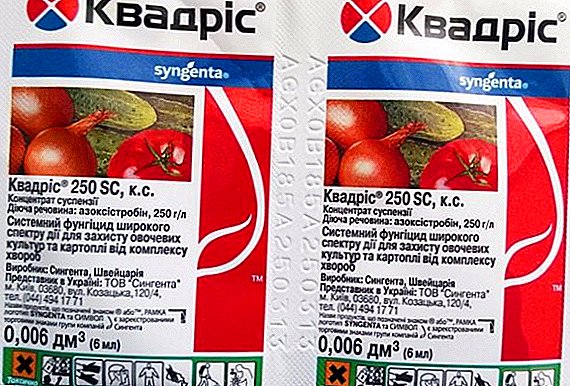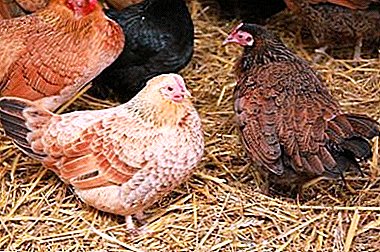
Surely every poultry farmer living with his household in the northern Russian latitudes, faced with the need to organize litter in the chicken coop for the winter. This issue should be considered carefully and seriously, because the quality of litter depends on the welfare of chickens, their health, and hence their egg production. In this article, we will focus on different types of litter for the chicken coop, the features and rules for their use.
Laying for chickens - what is it?
 Litter for chickens is called an extra layer of any material laid on the floor in the chicken coop. Usually, litter is organized in winter.
Litter for chickens is called an extra layer of any material laid on the floor in the chicken coop. Usually, litter is organized in winter.
This allows you to keep the floors of the coop in a warm condition, and the use of special fermented biofeedings helps to solve the problem of heating the chicken dwelling - a thick layer of litter material mixed with droppings releases a lot of heat into the environment.
Thus, the use of bedding in winter is an effective prevention of diseases of poultry, including infectious ones. In addition, the bedding layer makes the floor softer and reduces the risk of injury to the chicken while jumping off the perch. That is why many poultry farmers keep a small litter layer in the hen house even in summer.
Types and classification
Over the long centuries of poultry practice, villagers have learned to use a variety of materials as chicken litter. Moreover, the achievements of modern science also help to improve the quality of litter. Main material requirements are flowability, looseness, the ability to absorb and retain moisture and odor.
Depth
- Thin - on the floor of the coop there is a small layer of bulk material. This litter is used in the summertime to make the floor surface softer and more gentle for chicken legs. In addition, removing litter with a small amount of filler is much more convenient than simply scraping it off the floor.Reference! The bedding is replaced as it is polluted, usually it happens 1-2 times a week.
- Deep or non-replaceable - in this case, a thick, deep layer of chicken litter is poured on the floor in the hen house. As a rule, its depth varies from 30 to 50 centimeters. This type of coating is used in winter, as a deep layer of bedding material allows you to keep warm in a room with chickens.
As the litter is soiled, the litter is mixed with the droppings - this is how the resulting mixture disappears and, due to natural biochemical processes, produces heat. As the treading and tamping of the layer, add additional material to the original level.
The floor in the hen house is covered with a deep layer of bedding already in September, in warm, dry weather. In the late spring, after the last cold weather, they are taking it away. By the way, an excellent nitrogenous fertilizer for a vegetable garden is obtained from spent litter material.
According to the materials used
Bird Coop Bedding
 Modern achievements of biotechnology are also used in the amateur poultry industry. So, in the market for agricultural products can be found special bacterial supplements to the litter for the chicken coop.
Modern achievements of biotechnology are also used in the amateur poultry industry. So, in the market for agricultural products can be found special bacterial supplements to the litter for the chicken coop.
Their feature is the use of specific bacteria that ferment the main absorbent material and bird droppings, releasing a truly huge amount of heat.
So, the temperature inside the litter layer can reach 50 degrees Celsius, and above the layer - 27 degrees. Such an aid is quite possible to partially save on heating the room with birds. The advantage of using such a litter is really effective overheating of the bulk material and litter with the release of a large amount of heat into the environment.
Also to the positive aspects is the removal of unpleasant odor in the room with chickens. The disadvantage is the relative high cost of bacterial additives - the average price for a half-kilogram package is 2000 rubles (however, such a package is usually enough for 10 square meters of surface).
Sawdust
 Many poultry farmers consider this material to be the best to use as bedding. According to reviews, sawdust perfectly absorb moisture, retain the smell, perepryvayut and give off heat even without the use of enzymatic additives.
Many poultry farmers consider this material to be the best to use as bedding. According to reviews, sawdust perfectly absorb moisture, retain the smell, perepryvayut and give off heat even without the use of enzymatic additives.
Chickens willingly delve into sawdust, thereby helping to loosen the litter layer and contributing to its uniform mixing with the droppings. This effect can be achieved by adding grain waste to sawdust, then the chickens will spend a lot of time digging in the substrate. Among the disadvantages of sawdust can be called their relative high cost (of course, if your household is not located near the free source of material, such as sawmill).
Also hungry chickens are prone to swallowing sawdust. This adversely affects the health of the digestive system of birds. In order to avoid such consequences, only well-fed hens should be run into the henhouse with an updated filler. Sawdust litter is considered universal.
Note! Mixing sawdust with other materials allows you to achieve very good results and get exactly the substrate that will be most appropriate in your hen house.
Hay and straw
 Dry deciduous and stem parts of field grasses are also often used as bedding in chicken coops. In terms of absorption of liquids, hay and straw are inferior to sawdust, however, such material is much more affordable and easier to stockpile than litter for a chicken coop with bacteria.
Dry deciduous and stem parts of field grasses are also often used as bedding in chicken coops. In terms of absorption of liquids, hay and straw are inferior to sawdust, however, such material is much more affordable and easier to stockpile than litter for a chicken coop with bacteria.
For use as a litter dry grass is most often ground to a very fine state. So it performs its main function better. Large fractions (long grass) are sometimes spread over the main sawdust in the event that chickens in any case are prone to eating sawdust. In particular, this often refers to the breeding of chickens.
Dry leaves
 Free litter material is dry tree leaves. The time for gathering material and preparing the chicken coop for winter coincides successfully - both fall in September. Collect the leaves should be serene, warm and dry days. In any case, before filling the floor of the poultry house with a wood sheet, the material should be dried and crushed as thoroughly as possible.
Free litter material is dry tree leaves. The time for gathering material and preparing the chicken coop for winter coincides successfully - both fall in September. Collect the leaves should be serene, warm and dry days. In any case, before filling the floor of the poultry house with a wood sheet, the material should be dried and crushed as thoroughly as possible.
Dry moss
 Chopped dry moss, in particular sphagnum, will serve as the finest laying for chickens. This plant has long been known for its remarkable moisture-absorbing qualities, as well as the ability to retain even strong pungent odors.
Chopped dry moss, in particular sphagnum, will serve as the finest laying for chickens. This plant has long been known for its remarkable moisture-absorbing qualities, as well as the ability to retain even strong pungent odors.
In many areas, sphagnum grows in large numbers in swamps, however, nevertheless it is recommended to use it in a mixture with sawdust - so the moss is spent more economically. You should also know the measure in the collection of sphagnum in nature, a strong devastation of the swamp can undermine the functioning of its fragile ecosystem.
Peat
 Another excellent litter material originating from the marsh can be peat. This is one of the favorite additives to sawdust in areas located near extensive peatlands.
Another excellent litter material originating from the marsh can be peat. This is one of the favorite additives to sawdust in areas located near extensive peatlands.
Important! Peat is different from other litters, including fermentation, its antiseptic properties - the use of peat mixed with other materials will help avoid outbreaks of infectious diseases during the winter period.
However, peat has a couple of drawbacks. The first of them is a rather labor-intensive and complex procurement process. In a bog, peat should be removed from a peat formation beneath the sod. To do this, the turf area must first be removed with a shovel, and then, after removing the required amount of peat, lay in place.
Also, this material must be able to properly dry - undiluted peat, as well as overdried, does not cope well with its main function, that is, moisture absorption. The second disadvantage is the low prevalence in nature and the high cost of industrial material.
Needles
 Recently, a growing bed for chickens, made from fallen needles, is becoming increasingly popular. Indeed, it is very simple to get and prepare this material: it is enough to chop up fir branches or pine branches in the coniferous forest, bring them home and wait until all the needles fall off.
Recently, a growing bed for chickens, made from fallen needles, is becoming increasingly popular. Indeed, it is very simple to get and prepare this material: it is enough to chop up fir branches or pine branches in the coniferous forest, bring them home and wait until all the needles fall off.
In the larch forest, it is still simpler: this tree itself throws off the needles every autumn, it is enough just to collect it. However, needles, like many other litter materials, have a few nuances to consider when using.
- Do not cover the floor of the chicken coop with solid needles. The needles of many trees are very tough and have sharp enough tips to cut sensitive chicken legs.
Coniferous litter should be thoroughly crushed before use., having made the so-called flour of needles, which can be used in laying litter for chickens.
- Pine needles contain a large number of various volatile biologically active substances, essential oils, phytoncides. Dry needles in the composition of the litter can release these compounds into the environment for quite a long time, and their high concentration in the air of the chicken coop can adversely affect the health of the chickens.
therefore needles should be harvested in the period when the content of volatile substances in it is minimalthat is, from November to April. Then you will receive an excellent additive to the basic bedding material, which has a pronounced antimicrobial effect and a pleasant forest scent.
Conclusion
Responsible poultry farmers who care about the condition of their feathered pets should be engaged in choosing and preparing the litter for the chicken coop in advance, before the onset of cold weather. After all, it is often the health and reproductive ability of chickens that means the well-being of a farmer depends on the state and general availability of litter.
Fortunately, the choice of a variety of litter is very large - each owner, taking into account the characteristics of the birds and the room, can choose the option that suits him better than others.


